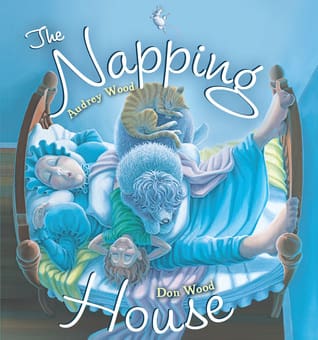A teacher I know and respect very much says, "We don't stop happy, why do we stop sad?" I love this saying, as it highlights how we as adults often try to stop children from expressing "negative" emotions like sadness, fear, or anger. Our culture in general discourages us all from expressing those feelings. But we all have a range of emotions, and we can't be happy all the time!
To help children grow up to be emotionally healthy and empathetic adults, we want them to be able to feel all different emotions without becoming derailed by them. One reason to raise “emotionally intelligent” children is that research shows that children with good social-emotional skills do better in school, in relationships, and make healthier choices. They will also be more comfortable in their own skin, and isn’t that what we want?
Children have all the same emotions we do and often feel things very intensely. They don't, however, always have the words to express those feelings, nor do they have the impulse control to stop themselves from doing something inappropriate, like hitting or throwing something. We can help children learn to identify their emotions and help them learn ways to express those feelings in appropriate, healthy ways.
All feelings are okay. Some actions are not okay.
Telling a child to stop crying or not to be scared doesn't make their sadness or fear go away. It may make us feel better not to have to see the child's distress, but it may also teach the child that her feelings are not okay and that she has to hide how she feels. What we want to do is to teach her that it is okay to feel however she feels, and that there are healthy ways to express those feelings.
It is also important to teach children that uncomfortable feelings will pass—they will not be sad forever, and something that feels terrifying now will not always be so scary. Children will be much stronger adults if we teach them that they can handle their feelings than if we teach them to push their emotions away.
So how do you teach your children to manage their emotions and to express them appropriately? As with most things you teach your child about the world, what you do is more powerful than what you say. Modeling, modeling, modeling. Children are watching you all the time, and they see how you manage and express your feelings. If you haven’t had it yet, there will be a moment you hear your child repeat some phrase you have used in a not-so-great moment—sometimes it’s something you didn’t even realize you said or that they heard. That's okay--it happens to everyone. But when you hear your child being kind and empathetic to someone (maybe even to you!) using words you have used with him, it will make your heart swell. The goal is to have more moments like this.
If you are not great at expressing or managing your emotions, especially things like sadness or anger, one thing you can do to help your child is to try to become more comfortable saying when you are upset and finding healthy ways to express and get through those tough times. It’s okay for your child to see you cry or close yourself in the bathroom for a few minutes to calm down. Taking a break, deep breathing, or crying are all healthy ways to manage your emotions.
Another basic strategy is to name your child's emotions, as well as those of other around you--in real life and in books. This gives them the language to start telling you how they feel. Using concrete signs of emotions ("I see tears on your face. That tells me that you are sad.") to help your child identify emotions.
One thing I am working on (it's really hard) is to simply validate a child's feelings when she is upset and reflect it back to her, without trying to tell her: how to fix it, why it's not so bad, or trying to coax her out of it. Imagine your child is sad because the paper she was coloring got ripped. Now try to imagine simply saying, "That really stinks. I'm sorry your paper is ripped. You are sad/mad about that." But DON'T say, "But we can fix it with tape," or "You can make a new one." That is so hard to do!
When children are upset, their "lid is flipped," meaning they are not thinking with the relatively small amount of reasoning they have. They are in their emotional brain, and they are not capable of rational thought. (Think about how you feel when you are really angry. Are you rational? Probably not. And our prefrontal cortex is fully developed, whereas theirs is not.) The best thing you can do in that moment is to wait out the storm. You can problem-solve later, when your child is calm.
The best time to talk about solutions and different ways to handle emotions with your child is during a moment of connection. When you are both calm and happy, your child can listen, learn, and think more clearly. Books are a great way to talk about emotions. (Ask me or your librarian for a list.) With any book you are reading, point out how a character is feeling and ask your child how you know they are feeling that way and why they might be sad/happy/mad. Pretend play is also a great time to practice difficult situations and how to express/manage emotions. Your child may think it's funny when you pretend to be angry or sad, but she is listening and learning.
This is some of the hardest stuff I do as a teacher, and one of the hardest parts of parenting for you. But it's worth it, so keep at it!














